Cautethia yucatana
Cautethia yucatana
B. P. Clark, 1919
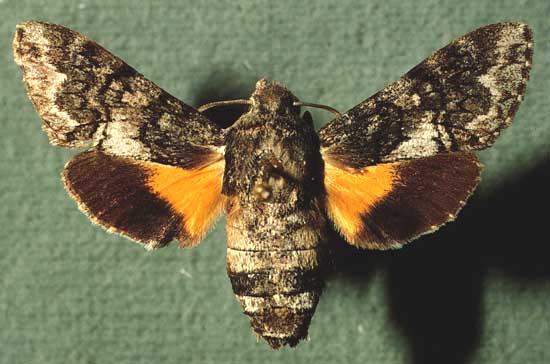
Cautethia yucatana female courtesy of Dan Janzen.
This site has been created by
Bill Oehlke at oehlkew@islandtelecom.com
Comments, suggestions and/or additional information are welcomed by Bill.
TAXONOMY:
Family: Sphingidae, Latreille, 1802
Subfamily: Macroglossinae, Harris, 1839
Tribe: Macroglossini, Harris, 1839
Genus: Cautethia Grote, 1865 ...........
Species: yucatana B. P. Clark, 1919
|
MIDI MUSIC
.....It's a Wonderful World.....
copyright C. Odenkirk
ON.OFF
<bgsound src="world.mid" LOOP=FOREVER>
|
DISTRIBUTION:
Cautethia yucatana,
[wingspan: 34-35 mm],
flies in
Mexico: Quintana Roo; Yucatan;
Belize: Corozol; and
Costa Rica: Guanacaste;
and sometimes
strays into the southern U.S..
Ben Trott (Playa del Carmen, Qunitana Roo, Mexico) sends the following notes: "Attached are the photos of the egg, and all the instars and colour forms of the larvae.
I'm also sending a couple of pupa photos (I think it's a male due to its size), and an in flight photo of the male, which is the first 'wild shot' photograph of
C. yucatana on the internet. I'm writing a paper on this species which will be published and available on the main page of
http://www.insectariumvirtual.org/, just like the paper on Erinnyis yucatana
(you're mentioned in the acknowledgments).
"A short time after my arrival in Mexico, I observed Cautethia yucatana nectaring along side Aellopos clavipes and Enyo lugubris
from Lantana camara. This species is very small, and VERY fast, it took four weeks to get a decent in-flight photo, and six long weeks of searching to
find the eggs and larvae, which happened on the 26th Dec.
"After a week of heavy rain I discovered seven eggs and three larvae (2x first instar & 1x fourth instar) in the same area (500m2). Six eggs and three larvae were
found on new shoots on the vine form of Chiococca alba, and one egg was found on the new shoots of the shrub form; this plant behaves as a shrub or
vine depending upon its age, the vine form has much thinner and softer leaves than the shrub form, which is only edible to the young larvae when putting out
new shoots. I suspect that the females search for these shoots to lay their eggs, the same as Aellopos clavipes.
"The oval (0.9x1.0mm) eggs are light green, and turn bright yellow prior to hatching; they are laid singly. After four or five days, the egg hatches and produces a
smooth skinned 3mm long yellow larva, (with relatively short upturned black horn) which turns uniform green with feeding. During the 2nd instar the yellow or
white dorso lateral stripes appear and the horn becomes granulose and reddish. The head remains yellowish in the first two instars.
"It is not until the third instar that the body becomes covered in fine white spots, the head becomes green, and the white or yellow sub-spiracular lateral
lines appear, which become more pronounced in the 4th instar, as do the spiracles; which can be orange, red, or black. The larva is no longer smooth skinned
in the 3rd and 4th instars and is covered with very fine short transparent hairs, which dissappear in the 5th instar. The horn is covered with fine black spikes.
"In the fifth instar, the larva adopts its final colouration. This is a trimorphic species, having a blue-green form, a green form, and a brown form with oblique
lateral dark green stripes; the latter form being rare and lacking the well defined dorso-lateral stripes. The larva also has a central dorsal dark line at this
stage, and the remaining stripes are very variable: they can be white, yellow or both, bordered with red or brown or not at all. The horn can be red, pink, green or
all combined, tipped with black. The horn becomes less 'spiky' and is more granulose and measures 2-3mm. Red spots can also appear along the central dorsal line.
It should also be noted that the 'granules' at the base of the horn adjacent to the anal flap are bigger than the rest of the horn.
"A day before maturing, the dorsal area starts to turn pink or purple. This colour deepens until the larva is ready to spin its flimsy cocoon amongst surface debris.
The fully grown larva measures 30-35mm. The pupa measures 20-25mm.
"The larva found in its fourth instar, spun its cocoon on the 2nd Jan. and pupated on the 4th. All the remaining larvae are in their fourth and fifth instars now
(7th Jan.) and should reach maturity in the next five days.
"Of course, I'll be sending photos of the pupae, and the imagos when they emerge. We already know they are sexually dimorphic, so they should be interesting.
I have also found out that Cautethia yucatana larvae do not accept Chiococca pachyphylla, so the only hostplants should be
Chiococca alba and Exostemma mexicanum.
"Well, that's it so far. I think I've covered what I can for the moment. Regards, Ben.
PS. Don't feel you have to upload all the pics, there'll be more."
Many thanks to Ben for the excellent description, account and beautiful images.
FLIGHT TIMES:
Cautethia yucatana adults fly as
multiple broods in Costa Rica and nectar at flowers.
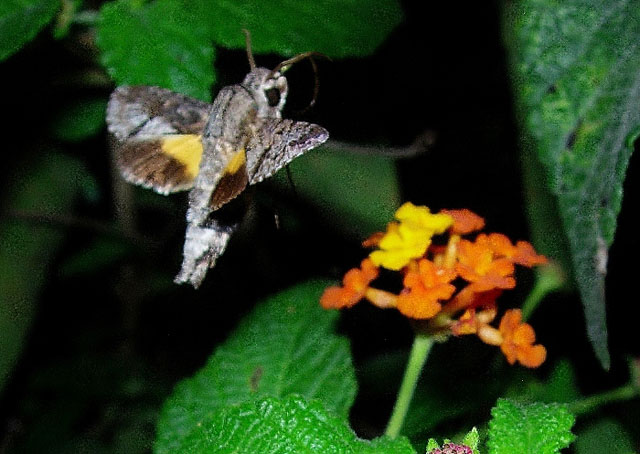
Cautethia yucatana male, in flight, Playa del Carmen, Quintana Roo, Mexico,
courtesy of Ben Trott.
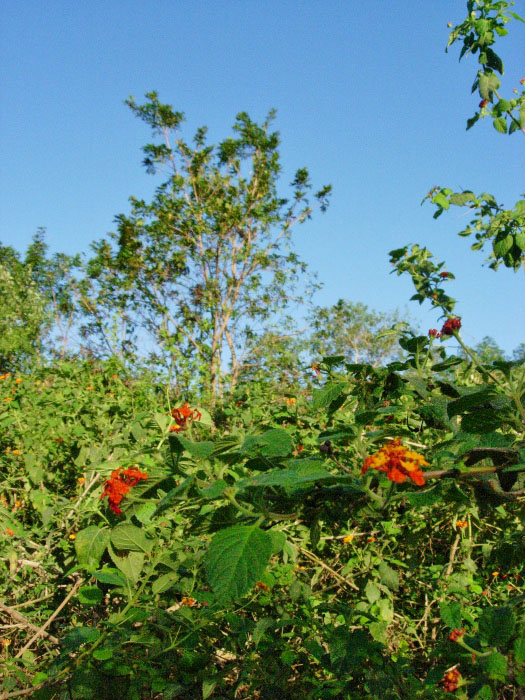
Cautethia yucatana habitat, Playa del Carmen, Quintana Roo, Mexico,
courtesy of Ben Trott.
Ben Trott often hunts for larvae, and looks for clues on potential host plants.
He indicates one host, Chiococca alba, can exist in two different forms, as a vine or as a shrub.
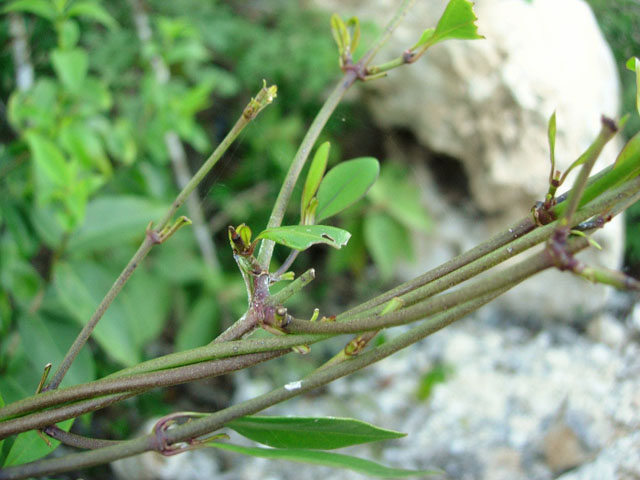
Cautethia yucatana feeding evidence, Playa del Carmen, Quintana Roo, Mexico,
courtesy of Ben Trott.
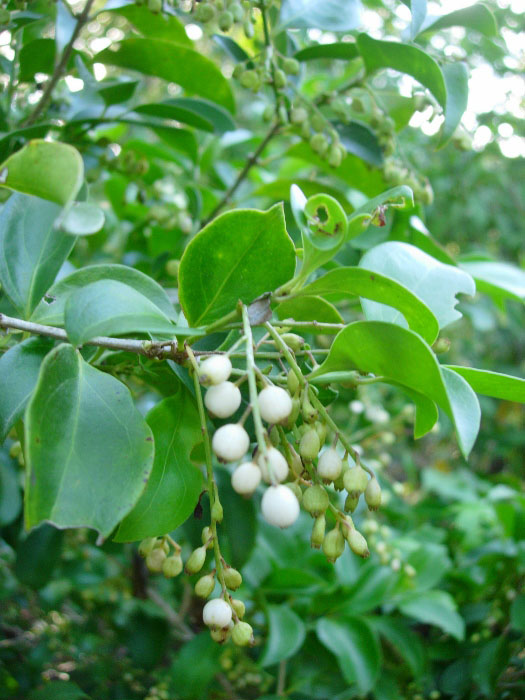
Chiococca alba shrub form, Playa del Carmen, Quintana Roo, Mexico,
courtesy of Ben Trott.
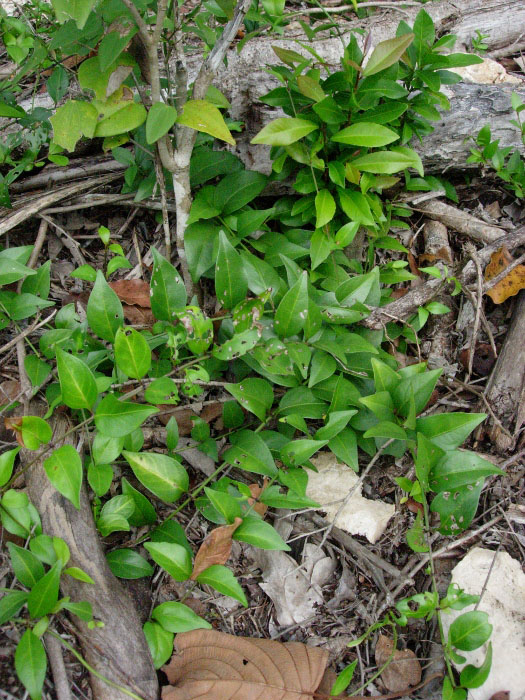
Chiococca alba vine form, Playa del Carmen, Quintana Roo, Mexico,
courtesy of Ben Trott.
ECLOSION:
Pupae probably wiggle to surface from
subterranean chambers just prior to eclosion.
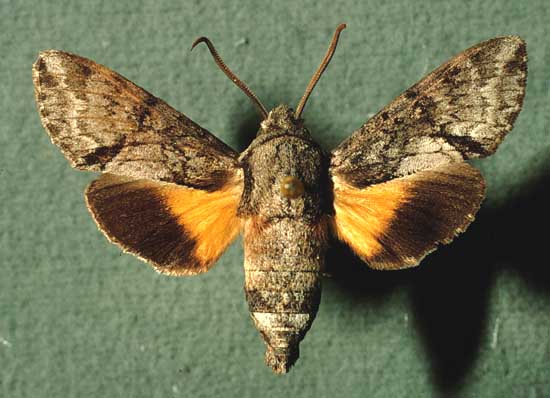
Cautethia yucatana male courtesy of Dan Janzen.
SCENTING AND MATING:Females call in the males with a pheromone released from a gland at the tip of the
abdomen.
EGGS, LARVAE, PUPAE:
Larvae feed on Exostemma mexicanum (BT) and Chiococca alba and probably other species of the Rubiaceae
family. Ben Trott, however, indicates they have rejected Chiococca pachyphylla.
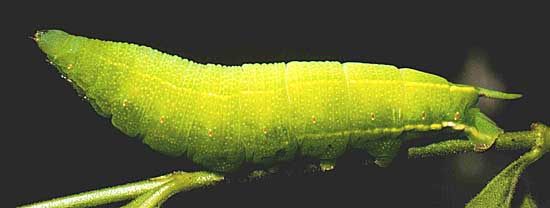
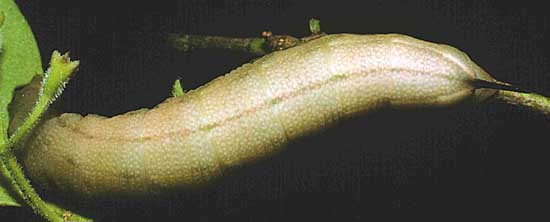
Moths emerge in as few as fourteen days from pupation.
Larvae are subject to parasitization from Belvosia sp. 7 of the Tachinidae family.
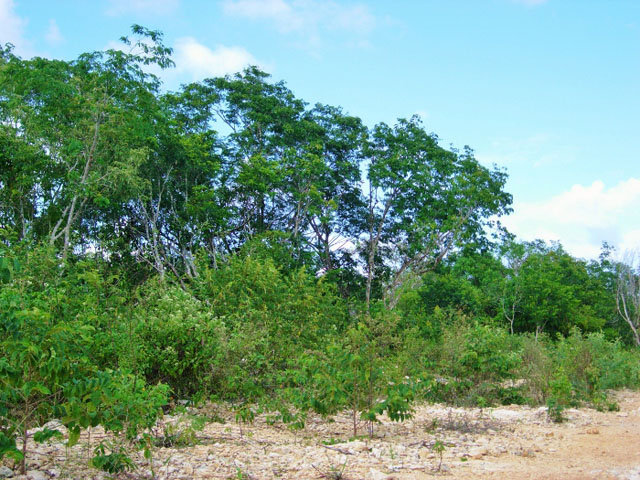
Cautethia yucatana larval habitat, Playa del Carmen, Quintana Roo, Mexico,
courtesy of Ben Trott.
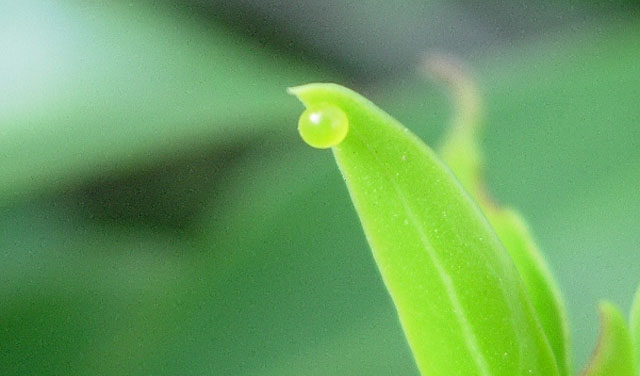
Cautethia yucatana egg, Playa del Carmen, Quintana Roo, Mexico,
courtesy of Ben Trott.
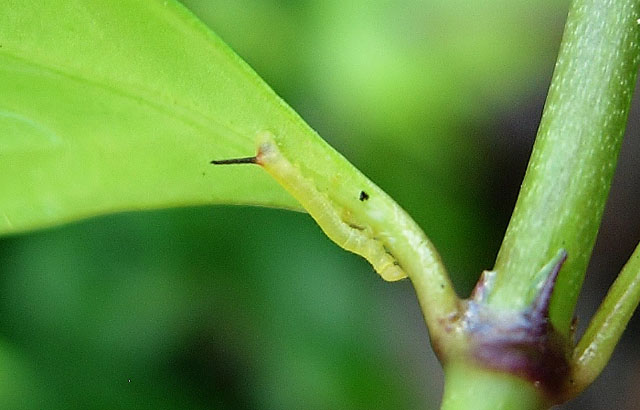
Cautethia yucatana first instar, Playa del Carmen, Quintana Roo, Mexico,
courtesy of Ben Trott.
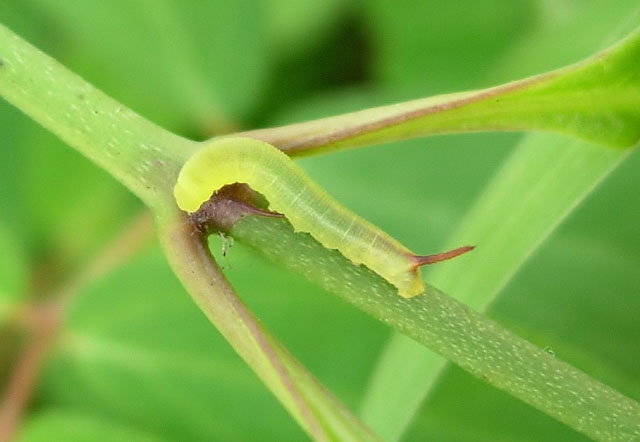
Cautethia yucatana second instar, Playa del Carmen, Quintana Roo, Mexico,
courtesy of Ben Trott.
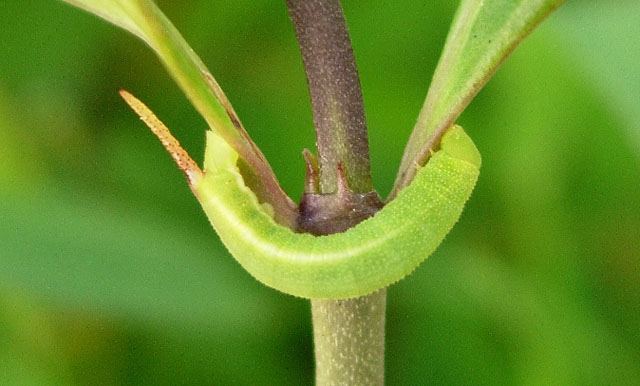
Cautethia yucatana third instar, Playa del Carmen, Quintana Roo, Mexico,
courtesy of Ben Trott.
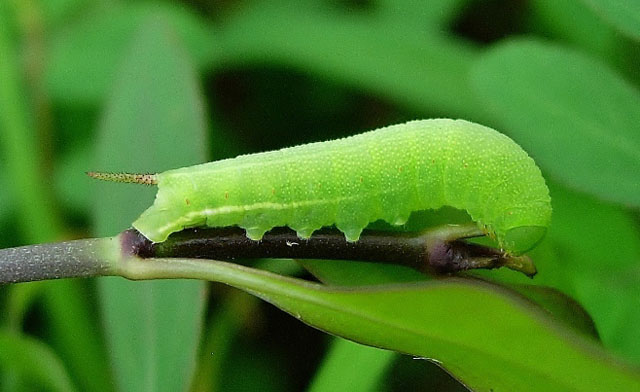
Cautethia yucatana fourth instar, Playa del Carmen, Quintana Roo, Mexico,
courtesy of Ben Trott.

Cautethia yucatana fifth instar, Playa del Carmen, Quintana Roo, Mexico,
courtesy of Ben Trott.
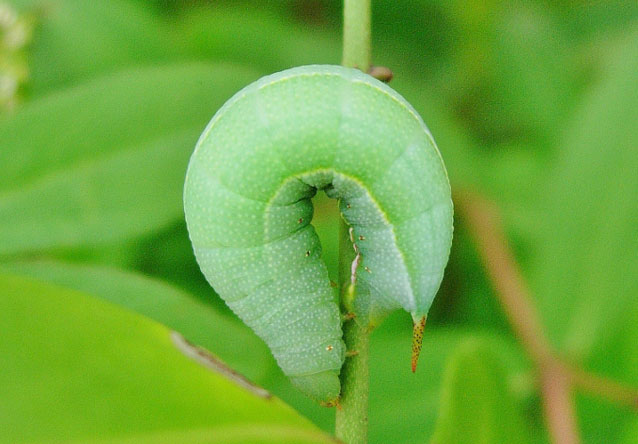
Cautethia yucatana fifth instar, Playa del Carmen, Quintana Roo, Mexico,
courtesy of Ben Trott.
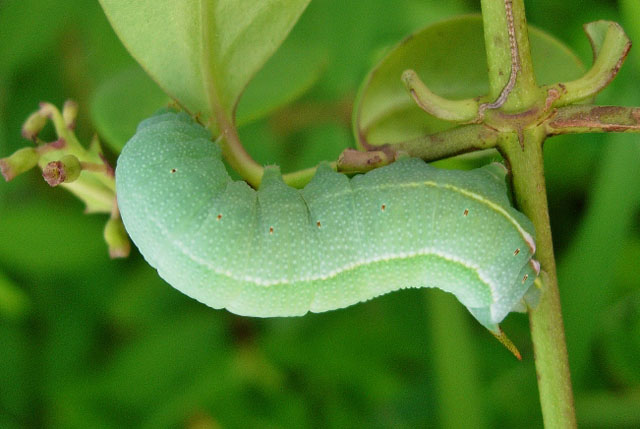
Cautethia yucatana mature fifth instar, Playa del Carmen, Quintana Roo, Mexico,
courtesy of Ben Trott.
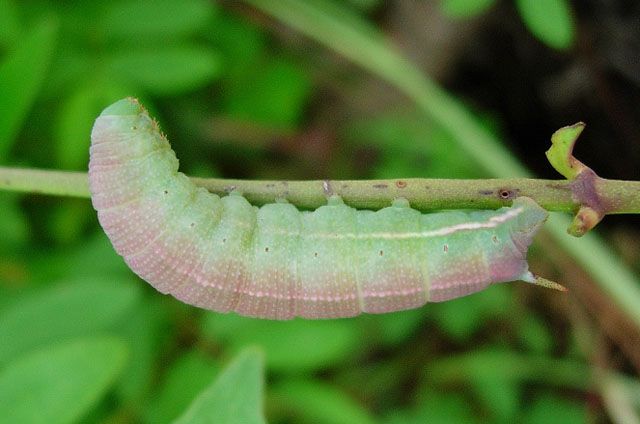
Cautethia yucatana prepupal fifth instar, Playa del Carmen, Quintana Roo, Mexico,
courtesy of Ben Trott.
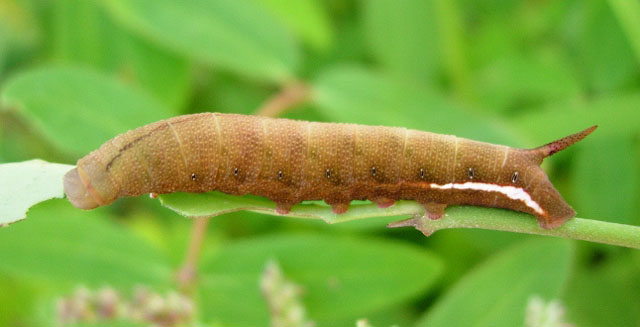
Cautethia yucatana brown fifth instar, Playa del Carmen, Quintana Roo, Mexico,
courtesy of Ben Trott.
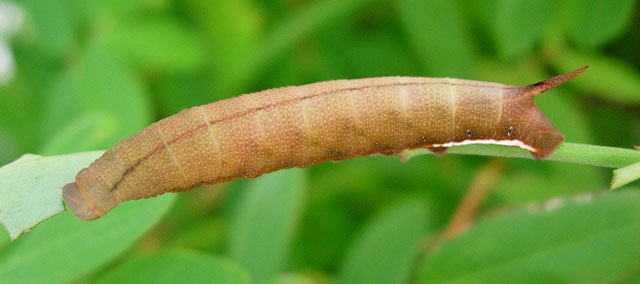
Cautethia yucatana brown fifth instar, Playa del Carmen, Quintana Roo, Mexico,
courtesy of Ben Trott.
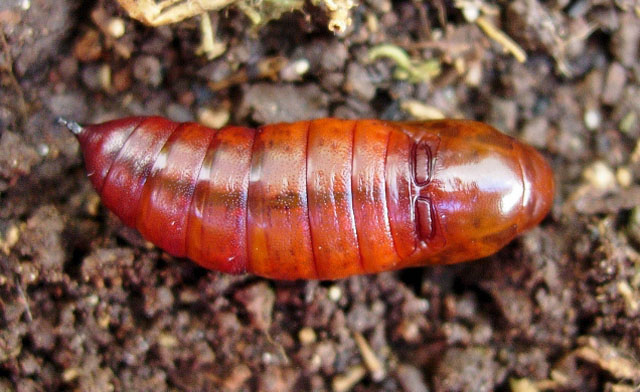
Cautethia yucatana male pupa, Playa del Carmen, Quintana Roo, Mexico,
courtesy of Ben Trott.
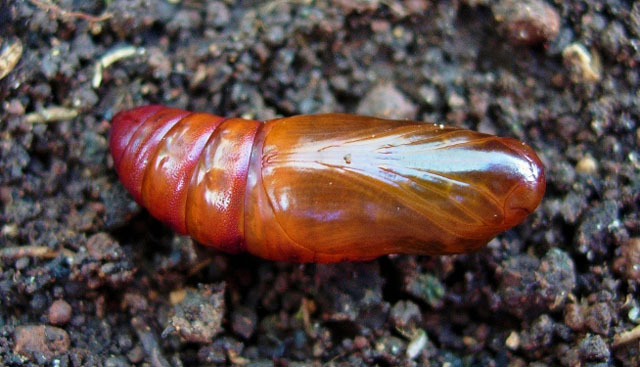
Cautethia yucatana male pupa (verso), Playa del Carmen, Quintana Roo, Mexico,
courtesy of Ben Trott.
Use your browser "Back" button to return to the previous page.
Goto Main Sphingidae Index
Goto Macroglossini Tribe
Goto Central American Indices
Goto Carribean Islands
Goto South American Indices
Goto U.S.A. tables






















